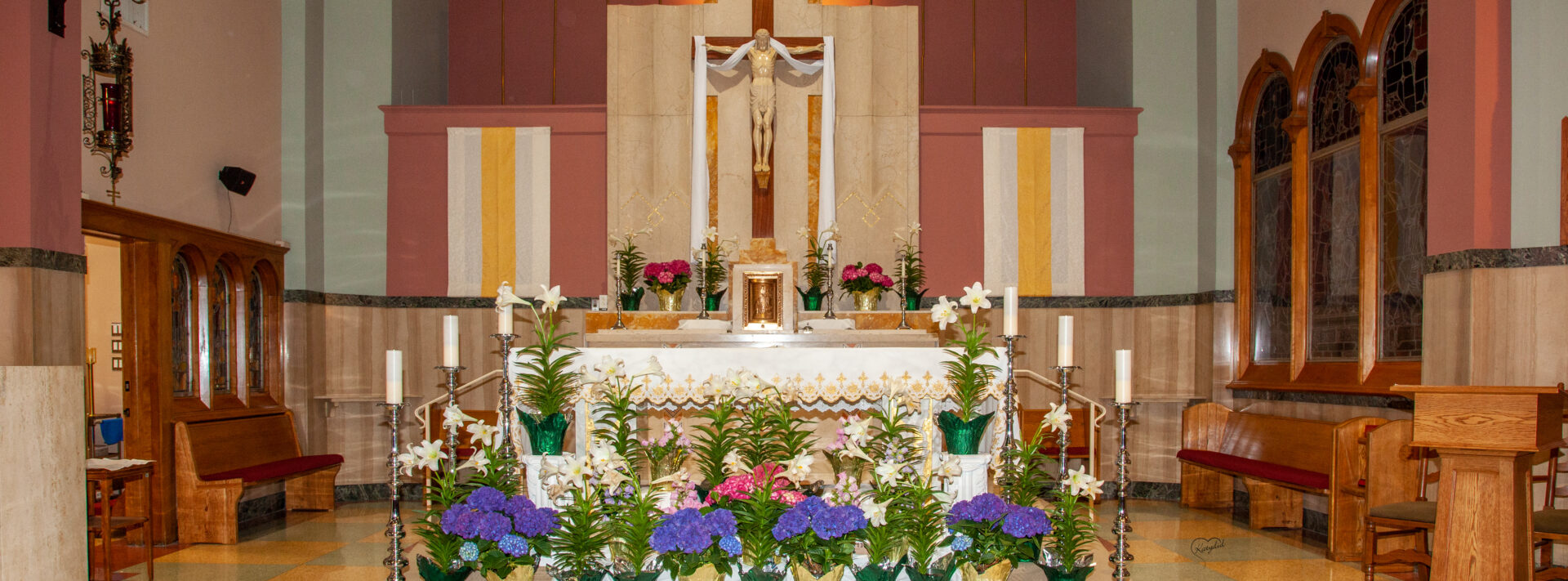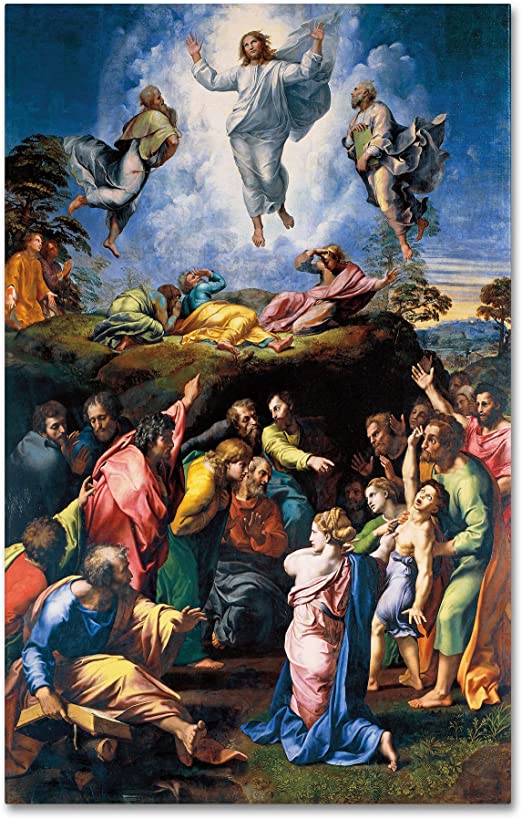Glory and Suffering
The last painting of the renowned artist Raphael is The Transfiguration. With profound insight, the artist includes two contrasting events. The top half depicts the Transfiguration scene with the glorious figures of Christ, Moses and Elijah. In the lower half we see a representation of the boy possessed by the devil. Besides giving us an artistic masterpiece, Raphael teaches us a profound spiritual and psychological truth, namely, human nature is capable of opposite extremes. It can descend to the depths of evil and inflict suffering or it can climb to the heights of transfiguration with Christ.
The Transfiguration is first of all a manifestation of the divinity of Christ. Occurring shortly after Christ had foretold His passion and death, the Transfiguration served as a strengthening of the faith of Peter, James and John. It also prepared them for the ordeal of Gethsemane by giving them a foretaste of the heavenly delight which both Christ and we, His followers, are capable of attaining through heroic suffering.
Second, the Transfiguration prefigures the everlasting enthronement of Christ, as announced to Mary by the Angel Gabriel: “He will be great and will be called the Son of the Most High, and the Lord God will give him the throne of David his father, and He will rule over the house of Jacob forever, and of his Kingdom there will be no end” (Luke 1: 32-33).
Third, the Transfiguration teaches us that glory and suffering are not incompatible. In fact, the enthronement of Christ would not take place until He suffered and died. This is the topic of the conversation between Moses and Elijah referred to in St. Luke’s account of the event: “And behold, two men were conversing with Him, Moses and Elijah, who appeared in glory and spoke of his exodus that he was going to accomplish in Jerusalem” (Luke 9: 30-31). Moses and Elijah were the only ones in the Old Testament to have seen God, a fitting qualification to participate in a vision in which they recognized God in the person of Christ, thereby giving evidence to Christ’s divinity.
As we witness the evil and tremendous suffering being inflicted on our brothers and sisters in Ukraine, as well as the ongoing violence here in the United States, it is difficult not to become discouraged. Rather, our loving and merciful Savior calls us to intensify our prayer and penance and trust in Him, who alone can transform human hearts. We must not despair of human nature. Even though we all do tend toward sin and self-deception, it is also true that we are created in the image and likeness of God. Therefore, human nature is capable of rising to heroic heights of altruism and holiness. We must not look only at the bottom of Raphael’s painting which shows us the boy possessed by the devil. We must also look up with hope and trust to the top of the painting which depicts Christ transfigured in glory with Moses and Elijah.
God love and bless you!
Sr. Kathleen Fitzpatrick, IHM

